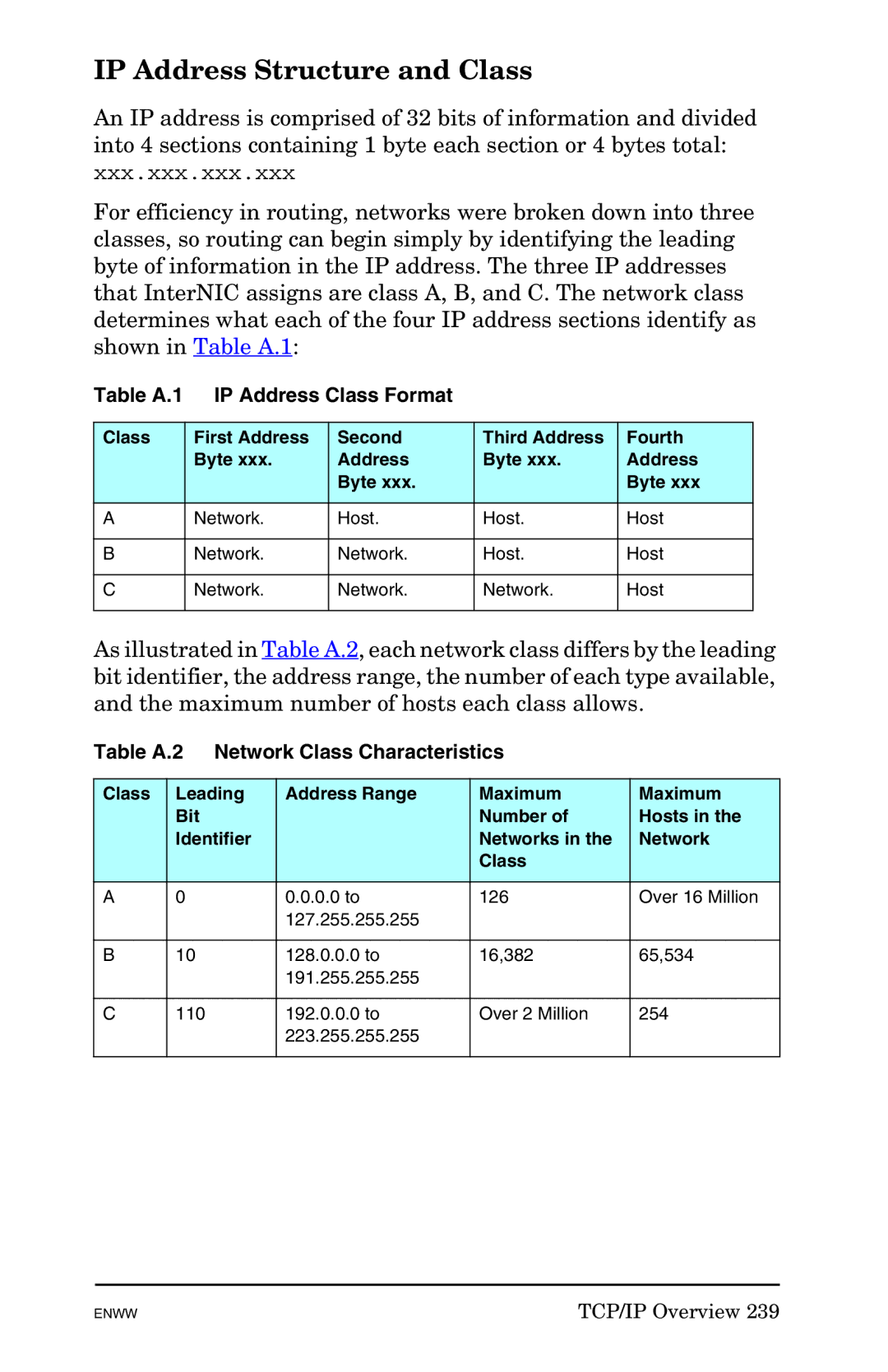IP Address Structure and Class
An IP address is comprised of 32 bits of information and divided into 4 sections containing 1 byte each section or 4 bytes total:
xxx.xxx.xxx.xxx
For efficiency in routing, networks were broken down into three classes, so routing can begin simply by identifying the leading byte of information in the IP address. The three IP addresses that InterNIC assigns are class A, B, and C. The network class determines what each of the four IP address sections identify as shown in Table A.1:
Table A.1 IP Address Class Format
Class | First Address | Second | Third Address | Fourth |
| Byte xxx. | Address | Byte xxx. | Address |
|
| Byte xxx. |
| Byte xxx |
|
|
|
|
|
A | Network. | Host. | Host. | Host |
|
|
|
|
|
B | Network. | Network. | Host. | Host |
|
|
|
|
|
C | Network. | Network. | Network. | Host |
|
|
|
|
|
As illustrated in Table A.2, each network class differs by the leading bit identifier, the address range, the number of each type available, and the maximum number of hosts each class allows.
Table A.2 Network Class Characteristics
Class | Leading | Address Range | Maximum | Maximum |
| Bit |
| Number of | Hosts in the |
| Identifier |
| Networks in the | Network |
|
|
| Class |
|
|
|
|
|
|
A | 0 | 0.0.0.0 to | 126 | Over 16 Million |
|
| 127.255.255.255 |
|
|
|
|
|
|
|
B | 10 | 128.0.0.0 to | 16,382 | 65,534 |
|
| 191.255.255.255 |
|
|
|
|
|
|
|
C | 110 | 192.0.0.0 to | Over 2 Million | 254 |
|
| 223.255.255.255 |
|
|
|
|
|
|
|
ENWW | TCP/IP Overview 239 |
